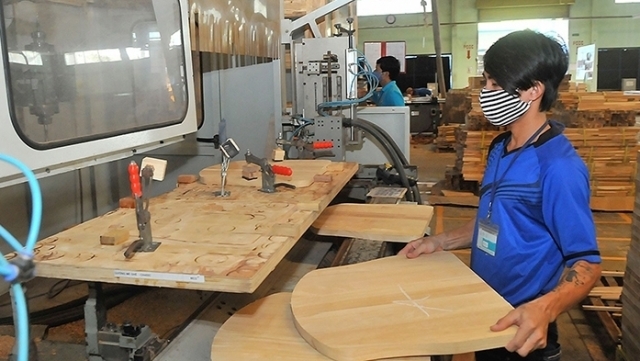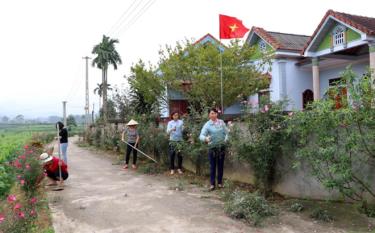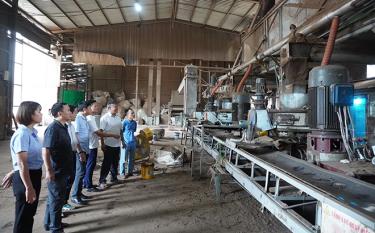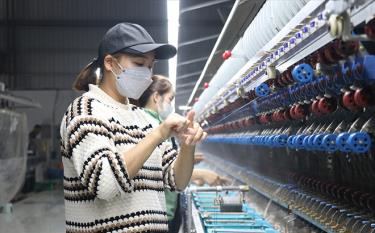Amidst many countries in the region and around the world suffering in their import and export economy, Vietnam's US$500 billion is an impressive figure, contributing to the overall development of Vietnam’s economy.
Import-export setting new record
As one among the key items that maintained a relative high export growth, exports of wood and wood products always saw a growth rate of up to 17-18% during most of 2019. In the southern province of Binh Duong – which is dubbed as Vietnam’s capital for wood exporting, Dien Quang Hiep, Chairman of the Binh Duong Furniture Association (BIFA), said that with about 4,700 enterprises invest in wood product manufacturing and processing, besides traditional markets, the increase in exports to new and upcoming potential markets such as Canada, the Eurasian Economic Union and the South Central Asia opens up new opportunities for Vietnam's furniture exports throughout 2019 and in the years to come.
"Vietnam's signing of Free Trade Agreements (FTAs) such as FTAs with ASEAN (AFTA), Comprehensive and Progressive Agreement for Trans-Pacific Partnership (CPTPP) and more recently the EU-Vietnam FTA (EVFTA) has helped cut or eliminate import tariffs on many products of the countries participating in the agreements, thus creating a competitive advantage for Vietnamese wood products,” Hiep said.
Along with wooden furniture, a range of Vietnamese items maintained high export growth rates in 2019, such as cell phones, computers, textiles and footwear. The contribution of these items helped the country's export and import turnover officially reach US$500 billion in mid-December last year, an impressive figure demonstrating the growth and sustainable development of foreign trade in Vietnam's economic structure. The country's export turnover also reached the goal set by the National Assembly (up from 7-8%), with the trade surplus reaching over US$11 billion.
Remarkably, in the context of a constantly fluctuating world economy, with trade tensions among major countries negatively affecting the global demand and export turnover of big powers continuously declining, the impressive figures of Vietnam’s import and exports make more sense. Analysing the successes of import and export activities in 2019, Minister of Industry and Trade Tran Tuan Anh said that in 2011, Decision No. 2471 approving the national strategy for sustainable import and export of goods in the 2011-2020 period with a vision to 2030 was approved by the Prime Minister. This strategy which set the goal by 2020, that the export growth rate would reach 10% a year, and the trade deficit would be fundamentally solved.
However, diversified and synchronised major solutions, focusing on strengthening Vietnam’s production and export capacity, boosting market development, favourable financial policies, restructuring State-owned enterprises and creating favourable conditions for credit market development, have helped Vietnam realise its roadmap comfortably, thus meeting and exceeding the targets set out in the above decision.
"The figure of US$500 billion in import-export turnover helped Vietnam reach the Top 30 countries with good import-export growth in the world. Considering the growth of the whole period of up to 13%, Vietnam is in the top of the world in maintaining high and sustainable growth. In particular, the trade surplus of more than US$11 billion solves a lot of problems, especially in the macro economy. Stable foreign exchange reserves at a high level ensure continued investment in expanding production and creating market confidence,” Minister Anh stated.
In addition, the record import and export figure also shows that Vietnamese businesses have effectively taken advantage of 12 effective FTAs. Currently, Vietnamese goods have been exported to 200 markets and countries in the world. The growth rate of trade turnover to markets with FTA signed with Vietnam, such as Japan, the Republic of Korea and Canada, have been maintained at double digits.
What plans for 2020?
2020 is considered a pivotal year, as it is the last year in implementing the five-year socio-economic development plan for 2016-2020 to open a new stage of development for the country. Regarding import and export under goings, 2020 is identified as a year with multiple difficulties and challenges. The world situation in terms of both politics and trade is forecast to be more complicated. The trade conflict among major powers has not yet ended and is likely to have further complicated manifestations in expanding into various fields and reaching higher levels. Regional and international instability also continue to be at risk of outbreaks and spreads, which may threaten the stability of global economy and trade.
According to Minister Anh, in this context, the important solution that the Government has determined to boost during the current period is to maintain macroeconomic stability and creating a favourable environment to facilitate Vietnam's cooperation with its partners, as well as enhancing the production capacity of the economy and actively participating in international trade.
In addition, it is necessary to boost growth drivers by facilitating administrative reform and institutional and legal improvement to achieve in-depth development that is closely linked to investment and international integration activities. Vietnam has targeted to continue to implement a consistent international integration strategy, while protecting Vietnamese goods from the risk of product origin fraud.
"It’s important to identify the core subject of import and export undertakings is the business community, and the State only plays a supportive role. So in addition to the support from the State, the business community should strive to make a breakthrough in import and export doings,” said Minister Anh.
One of the key Vietnamese export items is tra fish. Truong Dinh Hoe, Secretary General of the Vietnam Association of Seafood Exporters and Producers (VASEP), said that tra fish export in 2020 is expected to witness positive signals since the US has announced anti-dumping duties on Vietnamese tra fish at US$0 per kg. Furthermore, additional Vietnamese enterprises have been allowed to register for exporting tra fish to the US.
"Statistics from VASEP showed that currently, the export turnover of tra fish to the US has just stood at roughly US$300 million compared to over US$2 billion of the whole industry. Despite it not being at a high level, the US is still considered a potential market for Vietnamese tra fish. Therefore, in order to expand exports to the US and other markets, businesses need to continue reviewing and finalising the legal policy system to put it into operation, as well as organising the implementation of the food safety control system in production and trading of tra fish,” Hoe affirmed.
NDO






